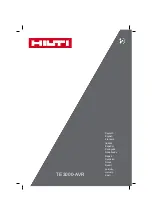
Deutronic D-IPS Manual - EN
- 5 / 19 -
03 / 2015
D-IPS® und DEUTRONIC® sind eingetragene Marken der Deutronic Elektronik GmbH. Technische Änderungen und Irrtümer vorbehalten.
D-IPS® and DEUTRONIC® are registered trademarks of the Deutronic Elektronik GmbH. Technical modificationses and mistakes reserved.
®
Warning:
The ground conducter supply ensues over the plug-in clamp.
Never loose or open any housing screws.
Only operate at the connectors when the unit is free of energy
Mains connection:
The mains connection of N, L, PE (1-phase) or L1, L2, L3, PE (3-phase) exclusively occurs
via the connections of the plug-in mains clamp. The connection sequence is printed on the
front side of the casing.
1AC-types are suitable for connection to IT networks.
3AC-types are not suitable for connection to IT- or Delta-networks.
Make sure before starting:
-
The mains connection must be carried out professionally and
the proctection against
electric shock must be secured.
-
In accordance with the standards of EN 60950 the device must be switchable in volt-free
mode outside the power supply (eg, by a breaker or the primary-side cable protection)
-
The ground conducter has to be connected.
Recommended minimum cross section of 1,5mm ² or AWG16 for North America.
-
The mains cords must be dimensioned and secured sufficient.
-
The output lines must be dimensioned or secured separately according to the device´s
output current.
-
A sufficient convection in the correct mounting position must be guaranteed.
Output and control lines
DC-output: 2x +Uout , 2x GND
Additional 2 interface plugs (10-pin) are mounted for the external control as well as a
programming interface.
Connecting cable:
Cable cross-sections of 0,2mm
2
to 2,5mm
2
flexible or rigid can be used
.
Pay attention for a sufficient cord diameter.
Remove insulation of the cable ends to 8mm approximately.
It is recommended to secure the cable ends through ferrules against unraiveling / splice out.
Ensure that all single wires are located at the connection area.
User information for applications with control lines in areas of radio interference
class B (EN55011):
When using interface cables and signal lines each must be drawn through RF ferrite with
two windings.





































